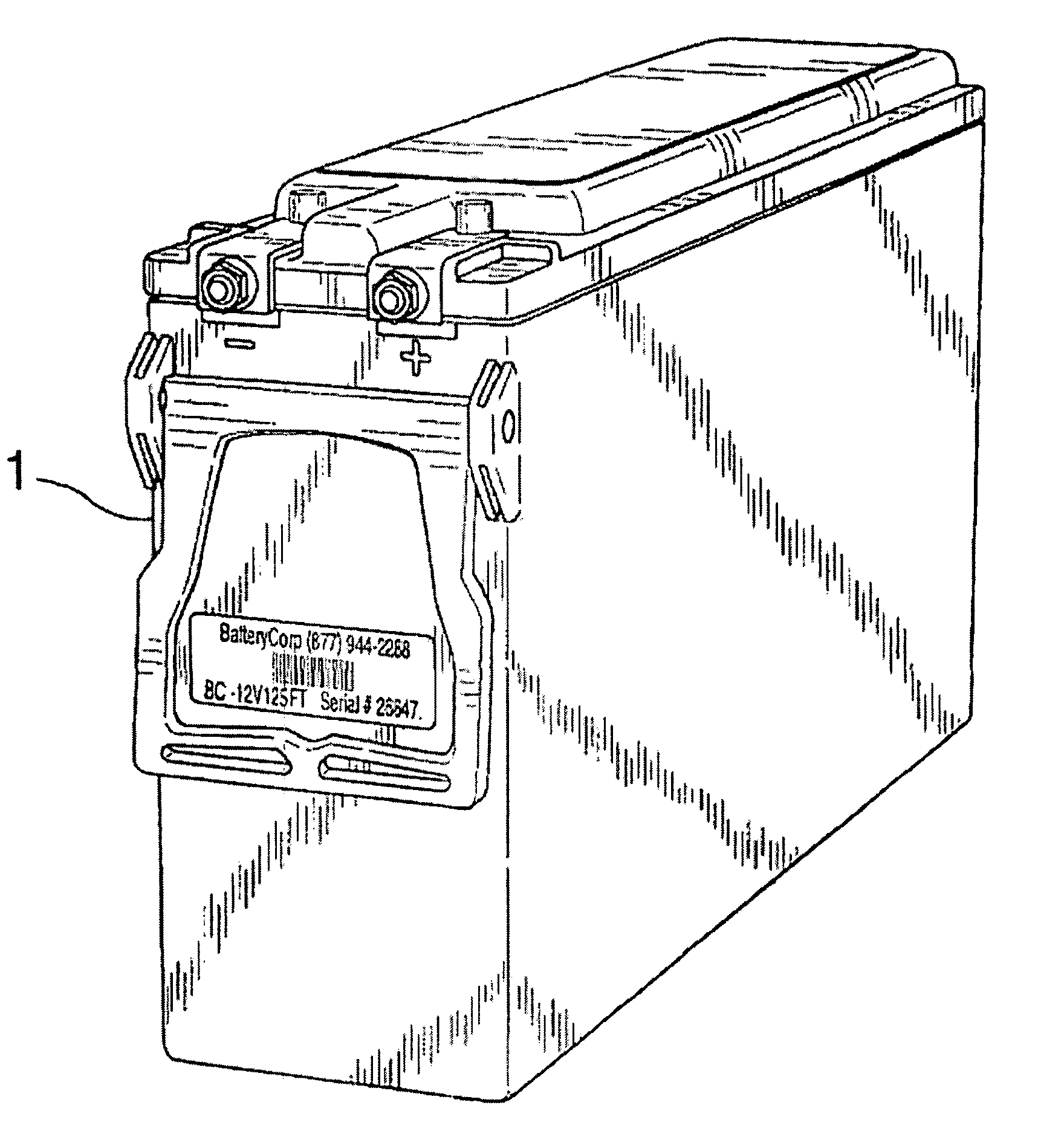Battery management system with runtime reserve analysis
a technology of runtime reserve and battery management system, which is applied in the field of large stationary battery management, can solve the problems of large discrepancy between design life and actual life, difficulty in managing storage devices, and difficulty in ensuring uninterrupted power servi
- Summary
- Abstract
- Description
- Claims
- Application Information
AI Technical Summary
Benefits of technology
Problems solved by technology
Method used
Image
Examples
Embodiment Construction
[0017]The invention improves way battery systems are managed. Battery management generally comprises a set of tasks. Some of those tasks include testing, maintenance, installation, fulfillment and disposal. The invention is capable of performing these tasks even over a wide geographical area. The main components include a battery or series of batteries; a testing device; and a reporting platform.
[0018]In accordance with the purposes of the invention, the battery or series of batteries may be lead-acid having a unique identifier and equipped with technology to enable automated tracking and runtime analysis. A unique identifier may be embodied as a bar coded label, or a virtual identifier (usually a series of alpha-numeric characters). The unique identifier is associated with attributes of the battery. Preferably, the attributes associated with the unique identifier include an ohmic test value and other power properties, such as voltage, maximum charge, and life. The unique identifier...
PUM
| Property | Measurement | Unit |
|---|---|---|
| physical | aaaaa | aaaaa |
| impedance | aaaaa | aaaaa |
| conductance | aaaaa | aaaaa |
Abstract
Description
Claims
Application Information
 Login to View More
Login to View More - R&D
- Intellectual Property
- Life Sciences
- Materials
- Tech Scout
- Unparalleled Data Quality
- Higher Quality Content
- 60% Fewer Hallucinations
Browse by: Latest US Patents, China's latest patents, Technical Efficacy Thesaurus, Application Domain, Technology Topic, Popular Technical Reports.
© 2025 PatSnap. All rights reserved.Legal|Privacy policy|Modern Slavery Act Transparency Statement|Sitemap|About US| Contact US: help@patsnap.com



